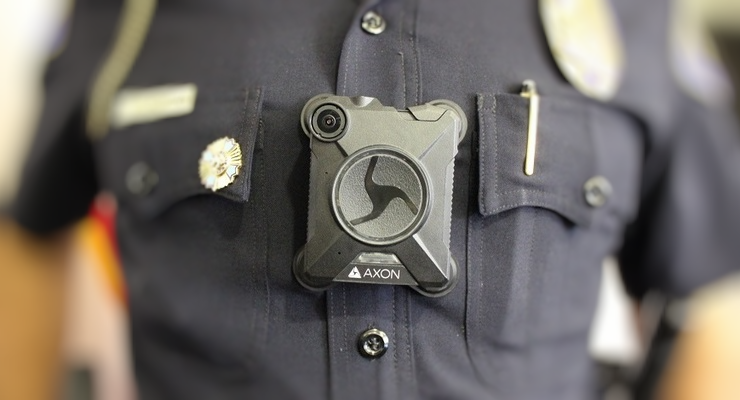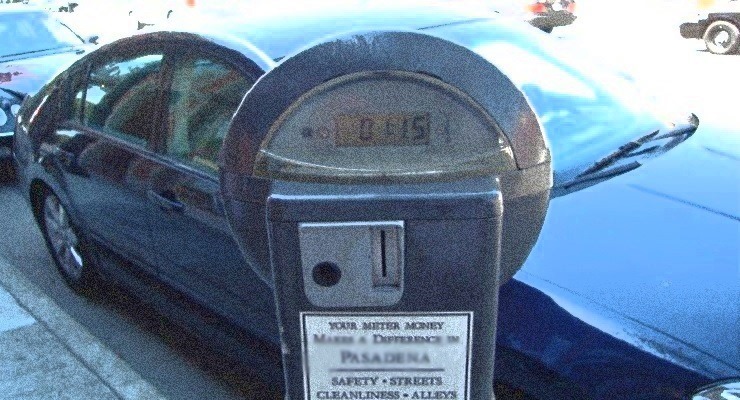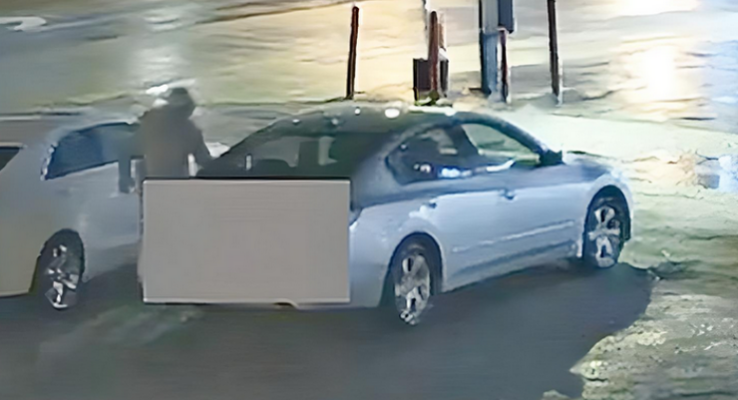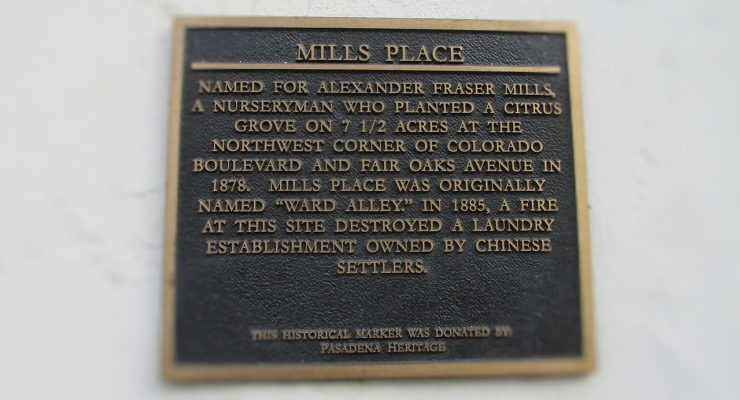
The Human Relations Commission unanimously approved on Tuesday the new language for the Mills Place Plaque.
The plaque provides information on a violent incident 137 years ago that destroyed portions of the city’s Chinese district.
“Dedicated to the memory of Yuen Kee laundry and the early Chinese settlers of Pasadena who helped build railroads, labored on the citrus and grape farms and established successful businesses. On November 6, 1885, a mob threw stones into the laundry, breaking a kerosene lamp that burned the building down. The next day, the city barred all Chinese immigrants from living in the central portion of the city,” stated the revised version agreed upon by the commission.
According to Commissioner Sandy Greenstein, the language was recommended by Pasadena Heritage.
“I think it’s great. It really has improved the impact of this plaque,” Greenstein remarked.
“The wording is very good now, we have come to a place where at least all of us agree,” Commissioner Wilhelmina Robertson remarked.
While they voted on the new language, the commission also agreed to consult Asian American organizations, including Chinese Historical Society of Southern California and Chinese American Museum to know if they would agree with the approved language.
According to the city’s website, some of Old Pasadena’s alleys have more than one of the 9 x 12-inch markers.
The review of the information on the plaques was made after two Pasadena residents notified Councilmember Felicia Williams earlier this year that what was written on the plaques do not accurately capture the gravity of the events connected to the fire which occurred in 1885.
After weeks of tension and threats of violence, 100 white men participated in the riot. Yet no mention is made of that on the plaque installed at Mills Place and Green Street in Old Pasadena.
“Named for Alexander Fraser Mills, a nurseryman who planted a citrus grove on 7 ½ acres at the Northwest corner of Colorado Boulevard and Fair Oaks Avenue in 1878,” the plaque states. “Mills Place was originally named Ward Alley in 1885. A fire at this site destroyed a laundry owned by Chinese settlers.”
According to a 2015 Pasadena Weekly article by Matt Hormann, the fire was caused by a white mob that, according to the story, “turned Pasadena’s Chinatown into an inferno, obliterating it from the landscape, and, for many years, from the history books as well,”
Hormann wrote that “Over the course of 24 hours, enraged racists drove Pasadena’s 60 to 100 Chinese citizens from the city in an ordeal that began with a dropped cigar and culminated in threats of a mass lynching,”
The names of the perpetrators of the violence have never been released.
The incident led to the formation of the city’s Fire Department and decades of racial separation, according to the article.
Problems began in 1883 soon after Yuen Kee moved his laundry, which was the first Chinese-owned business in Pasadena, to Mills Street, now called Mills Place in present-day Old Pasadena. There Kee rented a 544 square-foot building from Jacob Hisey, a trustee of the Pasadena Presbyterian Church.
Soon other Chinese entrepreneurs started businesses on Mills Street.
According to Hormann’s article, In 1884, the Pasadena & Valley Union, the city’s only newspaper at the time, began publishing racist articles that called the Chinese “an objectionable class” whose immigration “ought to be restricted.”
Later that year, the paper claimed there was “sufficient cause” for expelling the Chinese from Pasadena and claimed it could be done legally.
It wasn’t long until nearly 100 men had signed a petition pledging not to lease property to Chinese people. The newspaper continued to fuel the racist flames by claiming the agreement must be effective in driving them out if all property owners would unite in it.
The petition was signed by future mayors M.H. Weight and T.P. Lukens, the city postmaster, the local justice of the peace, the president of the Colorado Street Railroad Co., and the man who laid the cornerstone for Castle Green.
A fire began the same day the names were revealed. A group of white men had gathered near the laundry and began throwing rocks at it. A lamp was knocked over and the fire began. In full mob mentality, the men began looting the laundry after the Chinese residents fled for their lives.
The day after the fire, Chinese business owners returned to find an effigy of a Chinese man lynched from a telegraph pole across the street. At the same time, city officials were drafting an ordinance to ban Chinese people from parts of Pasadena.
“That it is the sentiment of this community that no Chinese quarters be allowed within the following limits of Pasadena: Orange Grove and Lake avenues, California St. and Mountain Avenue,” the ordinance read.
Chinese were warned to leave the city within 24 hours or they would “call out the crowd, and they would run the Chinese out by force.”
Fearing for their lives, Pasadena’s Chinese residents left town.












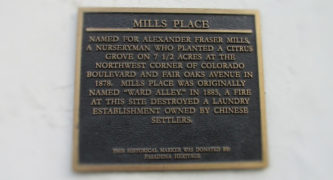

 1 comment
1 comment
